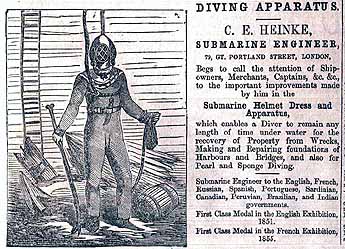
In
the December 1860 issue of "The Civil Engineer and Architects
Journal", published in London, a Heinke add appeared.
Company information
Charles Edwin Heinke was born on September 4th 1818. He was the son of a Pruissian immigrant, Gottlif Frederick Heinke who was a successful coppersmith and had a business at 103 Great Portland Street, London, since 1819. Charles was later to become a very successful manufacturer of diving equipment. His first helmet appeared around 1844.
Charles adopted the concept of a solid brass breastplate from (probably) William F. Saddler, instead of a beaten copper sheet one. Heinke's window design featured three similarly shaped, circular windows. They were not provided with outer protective grills. This contributed to better visibility, greater interchangeability of parts and made it easier to keep the windows clean.
Heinke worked hard to improve the Siebe style helmet and gradually gained an excellent reputation for reliability and for beeing better designed from the practical point of view.
He later introduced an additional exhaust valve on the front side of the breastplate, these days referred to as the "peppermill". This device made it possible for the diver to ascend and descend fast and as often as he wished. Heinke became world famous with the Pearler style helmet. These helmets featured a square breastplate. They were used in the pearling industry all over the world. The idea was later copied by companies like Siebe, TOA, Robison and Morse. Charles died in 1869 but his company continued.
As stated above, the first helmet came on the market around 1844, the last one in 1961.Many thanks to Dr. John Bevan for his help on this part.
|
|
|
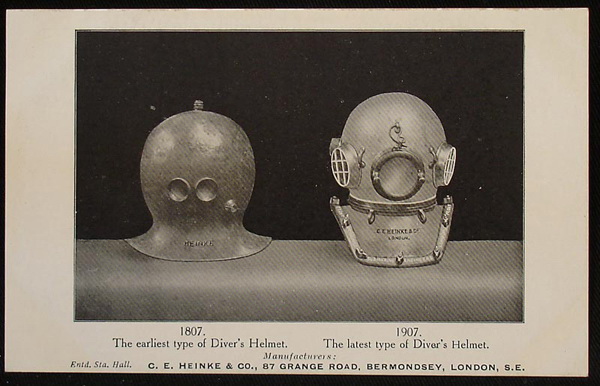
in 1907 Heinke produced this
postcard which confusingly shows a helmet designed
dated 1807 alongside the design which became known as The Pearler.
Air inlet
Over the years, the air inlet changed.
|
|
Early style
The non return valve is
integrated in the air inlet elbow. |
|
|
Later style
The non return valve is not
integreated in the air inlet elbow and should be screwed on before
screwing the air hose on. |
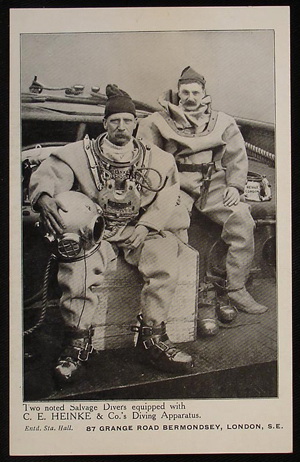 |
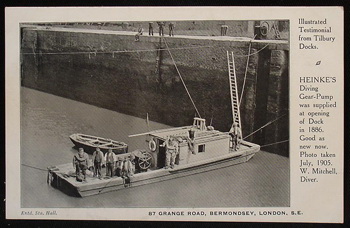 |
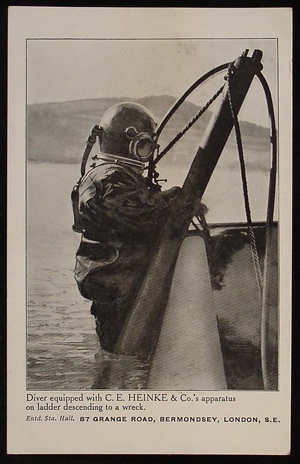 |
| The
Heinke company produced many post cards as advertising promotional material. To see more follow the link to The Diving Art Chapter |
||
|
|
||